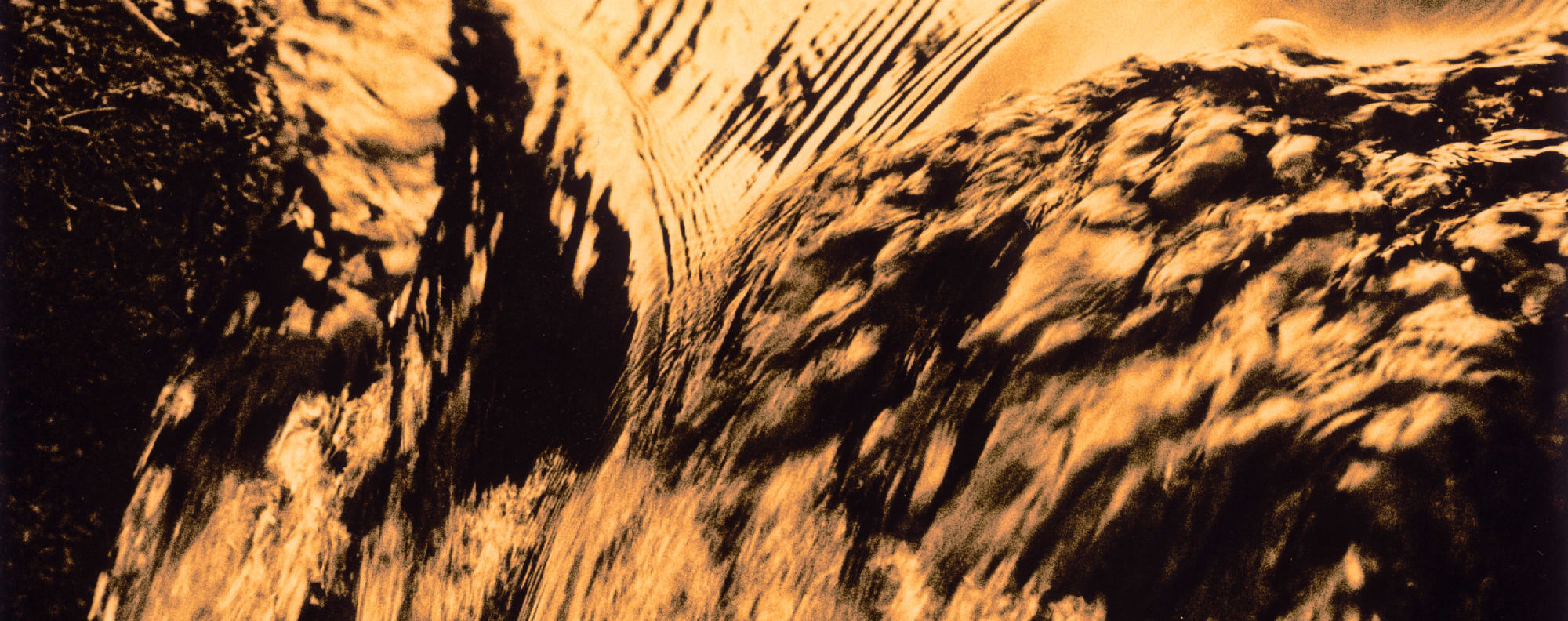This is a reproduction of the text and images contained in an article that appeared in The Anglo-Welsh Review, Volume 17, No. 40 Winter 1969. It contains a reproduction of part of an article that Moore wrote for Creative Camera magazine that appeared in the November 1968 edition, together with material from him written specifically for this article.
The Photography of Raymond Moore
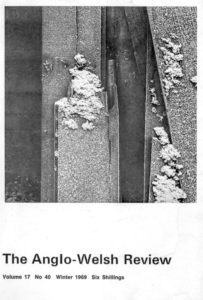
An exhibition of photographs by Raymond Moore has been touring Wales since last October and can still be seen at University College, Swansea, from 31 January to 15 February (1969). This is the first exhibition organised by the Arts Council of the work of a living photographer and, in the words used in the programme, it ‘represents a major step towards the inevitable realisation of the indivisibility of all forms of creative expression.’ One of Britain’s most respected photographers, Raymond Moore was born at Wallasey in 1920, studied at Wallasey College of Art from 1937 to 1940 and from there won an Exhibition to The Royal College of Art. Though originally a painter, he gradually changed to photography as a more suitable medium for his purpose. He worked for many years on Skomer and the mainland of Pembrokeshire with Ray Howard-Jones, the painter, whose sympathetic understanding was an unfailing source of encouragement to him. At present he is teaching creative photography at Watford College of Art. Apart from the exhibition touring Wales this winter he has had one-man shows in London in 1959 and 1962, at University College, Aberystwyth, in 1966 and at Yr Oriel Fach, St. David’s, later the same year. His work has been published in a number of photographic books, including The Concise History of Photography by Helmut and Alison Gernsheim and the Penguin Colour Photography by Eric de Mare. Examples of it are also to be found in public and private collections, including the Gernsheim Collection.
The following is part of an article Raymond Moore wrote for Creative Camera in November 1968:
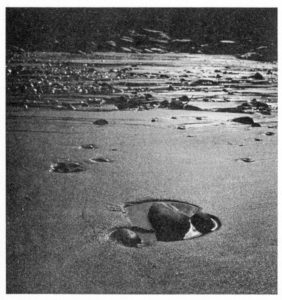
I have been accused of being influenced by modern art. Of course I have, it’s better than being influenced by the nineteenth century.
I am influenced by hundreds of things, all life is influence of one sort or another, one can’t avoid it. Influence is one thing, self-conscious imitation quite another. Anyone living at this time must be affected to some extent by the forces that have produced its painting, music and poetry, and if he is an honest photographer, this is bound to show quite naturally and un-self-consciously in the work, governing his choice and treatment of subjects, whether near abstract or photo reportage. The photographs of Eugene Smith or Siskind could never have occurred at any other time.
In this technological era when photography and allied techniques are being used increasingly in the service of science and industry, it is important not to lose sight of its capabilities as a vehicle of individual human communication. So much of photographic image making is thrust upon the public, much in aid of advertising of one sort or another. The results though often extremely skilled technically tend to deal in sugar-coated half-truths with sentimental overtones. In the field of photo-reportage much is inverse sentimentalism, a tendency to view life from an essentially seamy aspect-the bias is towards the grim and grainy. In neither case is this always the fault of the photographer. He is usually directed by editors devoted to the sensational, and to the advertising barons who use him as a tool-admittedly often a well-paid one-to persuade the public into buying. So much of this has caused many people to think this is what photography is about and to dismiss from their minds its possibilities as a medium of serious personal expression.
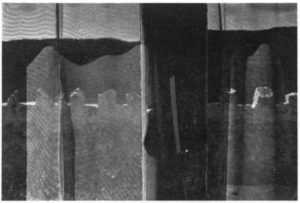
The selection of particular images by an individual can be just as much a form of creative communication as any other graphic medium, and to relate these images in a book or exhibition can be a compelling revelation of a particular view of life.
If good taste and design skill are applied to the pursuit of the fashionable and ‘with it’ the perpetrators and the public can be deceived into thinking this is a significant art form, and much of the bleached out high contrast glossy magazine look is only good taste allied to technical skill, though many of the photographers would probably hate to think so.
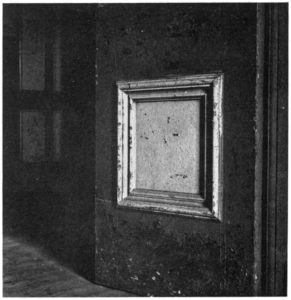
No, photography is primarily recording and when the recording is skilled and of something deeply felt it can be art with a small ‘a.’ A selection from the life work of a photographer of genius like Cartier-Bresson would justify a capital.
But art or not, photography should be classed among the major means of creative expression not merely as a means of titillating the senses and pandering to human vanity between the pages of popular glossies, however skilled and inventive the techniques.
Of course the basic reasons behind all this lie in the nature of the twentieth century society, which while defending the rights of the individual, by the nature of its complex industrial structure compels the individual to become just another cog. He is rarely able to realise and express his whole ‘human beingness’ and achieve a state of deep personal responsibility at work, and in his leisure hours understandably succumbs to the dictates of the box and other methods of commercial persuasion. It is conceivable that in the future, apart from a few privileged professionals, only the gifted amateur (one who loves) may be able to keep alive this vitally important function of human expression.
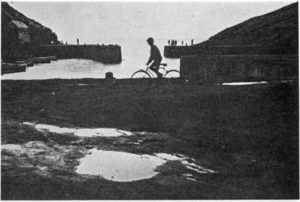
The strange, suggestive forms of rock and sand, the brooding presence of landscape and the almost surrealist interiors of old buildings are what provide me with visual equivalents to feeling, which I must have to justify a photograph. I am quite unable to explain why I choose particular objects in preference to others, it’s like asking a musician to explain or justify a series of notes. My concern anyway is often more with the shapes, tones and textures objects possess, rather than with any literary overtones they may contain.
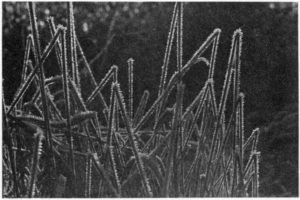
The meaning and message lie in the photographs, it’s a visual matter and it cannot be translated into words. To me, they sing and celebrate life, or should do, and life is the extension of the person taking them. It’s the photographer’s uninhibited reaction to the moment that counts, not premeditated images culled from the stale air of the past. One of the greatest dangers is self-conscious originality; to try and be original is a sure way of not being. An empty self, childlike and uninhibited, is far more likely to make a truly original statement.
Technical matters are relatively unimportant. I use the camera I am happiest with, and that can produce the type of print I visualise; superb definition and ultra fine grain may be far less convincing than a grainy blur.
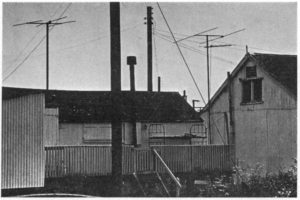
Light from the gentle and persuasive to the harsh and strident is the magical communicating agent; without it, all in life and the photographic print is black.
In a deeper and more penetrating statement about his art, shortly to be published by The Welsh Arts Council, Raymond Moore writes as follows:
Photography is a means of sifting or abstracting visual phenomena – it can be solely concerned with conveying factual information about objects in a particular position in time and space – or it can convey an awareness or revelation of the marvellous.
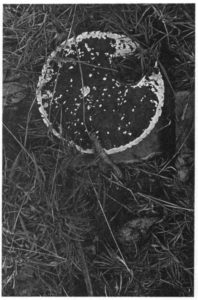
For me – the no-man’s land between the real and fantasy – the mystery in the commonplace – the uncommonness of the commonplace.
An understanding of the limitations of the photographic medium is the means of recording the encounter or event. Awareness involves these limitations.
THE ENCOUNTER
The subject is limited. This defines its personality or existence. It is a particular thing or combination of things. The photographer is likewise a limited entity. The positive phenomenon of the encounter occurs when the photographer’s being is triggered into activity by the subject – the subject depends for its photo existence on the photographer. No other can reveal it – an awareness is involved both of the subject and the self – almost becomes the other.
PHOTOGRAPHY IS CONCERNED WITH SHORT PERIODS OF TIME
Photographing a fraction of the subject’s life, the photographer reveals his own. Totally absorbed and committed for a fleeting moment in something outside his limited entity-must result in a PERSONAL STATEMENT.
COMPOSITION or the relation between forms is an integral part of this. Reacting in the strongest and most precise manner must result in the best composition. This is the simplest and strongest way of saying something – really seeing which implies selection and human personal preference.
NO OTHER MEDIUM CAN VISUALLY ABSTRACT THE ACTUALITY OF A MOMENT – much of the translation is mechanical – the issue is thrown on the subject. If allowed to, the subject talks, or is revealed by the photographer – the revelation is of course one-sided, limited and personal; how could it be otherwise? He must reveal by selection – possess a hypersensitive awareness of light. The mechanical abstracting eye of the camera he must control by knowledge of its limitations and distortions, but not rigidly – the camera’s eye is part of the total revelation and awareness. He must be totally involved with the whole process to the final print, so as to create or reveal an abstraction of the reality he experienced in a moment.
THE MIRROR
A blank mind like a clean mirror – sensitive – capable of receiving and giving. Different mirrors receive and interpret differently. A clouded mirror clouded by self – consciousness or preconceived ideas inhibits true awareness. The mirror of the mind changes with experience – a development occurs.
INTENSE AWARENESS – RECOGNITION – generates a desire to frame and record a photo abstract of a moment of life. The result, divorced from its four-dimensional surroundings in space and time and converted into two dimensional monochrome, can persuade other minds to similar states of awareness: they are apart from it, no longer a part of it. They see for the first time; unlike painting, one photograph can never mirror a life’s experience, a relationship between numbers of photographs is called for – like words or phrases in a poem. The result of intense awareness at the moment (precision of composition) can suggest a broadening of time – a timelessness. Sensitivity fluctuates – at low ebb ripples of self-conscious thoughts distort the surface, and cloud the vision. There is as little chance of taking a meaningful photograph as of making a technically perfect negative with a lens covered in grease and dust. Quick instinctive reactions are not possible, the self has not been lost or merged. Preconceived (secondhand) ideas abound. Technique for its own sake – handmaiden of academicism – preoccupies the thoughts. The self is repeated – the phoney self – the conception one has of one’s self. How can this be the true self which is forever moving and changing, and is an extension of the so-called outside world?
THE MOMENT DOES NOT NECESSARILY IMPLY INVOLVEMENT WITH MOVING FORMS – but also the recording of static forms as far as any form can be static – light is a constantly changing element playing over the surface of things. Both physically and mentally the photographer should be a moving element. With this movement the camera shutter is so involved that little difference remains between the static camera and the moving object – each can revolve about the other. The senses fluctuate – awareness at a street corner one day – pass the same place later – nothing. Lose the self of self-consciousness, becoming truly aware. With this partaking experience of the awareness beyond self, comes entry into the universal, and a vision more likely to be shared by others. The photographer is inescapably involved with an act of momentary choice – whatever the nature of the subject. His own nature fluctuates and changes – the choice may be completely altered a few moments later. Hence the use of a number of exposures with a small camera in an effort to capture what is truly felt about something – as opposed to the tendency to be over cautious – to plan too carefully.
Too much planning inhibits an at ONENESS. There is no AT – ONE – MENT.
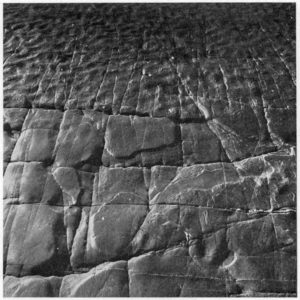
Follow your nature and accord with the TAO :
Saunter along and stop worrying. If your thoughts are tied you spoil what is genuine. Don’t be antagonistic to the world of the senses, for when you are not antagonistic to it, it turns out to be the same as complete awakening. The wise person does not strive, the ignorant man ties himself up … If you work on your mind with your mind how can you avoid an immense confusion?
Part of the ‘Treatise on Faith in the Mind’ – attributed to Seng -Ts’an (Seventh century A.D.).
